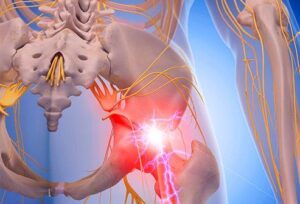Regulations related to cannabis have been changing. As a result, more and more people are beginning to use cannabis for medical purposes. Multiple sclerosis, post-traumatic stress disorder, and nausea and vomiting that occurs with chemotherapy are some of the more common uses of medicinal marijuana. Of those who use medical marijuana in the United States, however, almost two-thirds use it for pain relief.
Effectiveness and Safety
The National Academies of Science recently conducted a study to determine how often the use of medical marijuana is supported by scientific evidence. They found that there is strong support for the potential of marijuana to help with patients’ symptoms in 86% of the cases where patients are using marijuana medically. Nonetheless, a major challenge is determining exactly how to use cannabis to improve symptoms and for pain relief.
Clinical trials have demonstrated both efficacy and safety of cannabis products for use against chronic pain. However, unlike with pharmaceutical drugs, there are no clinical guidelines to help determine dosing or to prevent substance abuse of cannabis. As a result, most patients are left to experiment with the drug to determine how they can optimize its use for their purposes.
One complicating factor is that there are different routes of administration for cannabis.. For instance, smoke inhalation through the lungs is one common route of consumption, but the amount of cannabis that is absorbed through by the lungs’ alveoli depends critically on details of how each user inhales the smoke. It is therefore hard to control what dose of cannabinoid is delivered through smoke inhalation. Recently, many of the cannabis-related drugs that have been developed to be administered orally or through nasal sprays.
How it Works
Though multiple “medical marijuana” drugs have been approved by the United States Food and Drug Administration (FDA) and other countries, only some of these drugs are indicated for pain relief. Sativex, for instance, is primarily used for neuropathic pain and pain that occurs as a result of spasticity.
Precisely how cannabis produces analgesia is still a subject of debate, but some aspects of the likely mechanisms have been clarified through scientific research in recent decades. There are two main types of cannabinoid receptors present throughout the body, known as CB1 and CB2. CB1 is present in higher abundance and is concentrated in areas of the central and peripheral nervous systems that deal with pain, so these receptors are more relevant than CB2 receptors when it comes to pain perception.
While some of its pain relief effects may occur through interaction with these receptors, cannabis also appears to affect other receptors that play a role in reducing inflammation. These receptors include serotonin, adenosine, and peroxisome proliferator-activated gamma receptors. Cannabis can also inhibit enzymes that break down endocannabinoids, and this inhibition is associated with analgesic effects.
Going Forward
With the entry of marijuana into the legal market and into medical practice, the potential for these medications to help pain, will continue to be researched. Consideration of clinical management of these drugs and relevant patients will also be important. There are significant opportunities for cannabis to address different types of pain associated with distinct causes. It is therefore likely that the use of cannabis among chronic pain patients will grow and that more products will be developed to improve quality of life for these patients.













